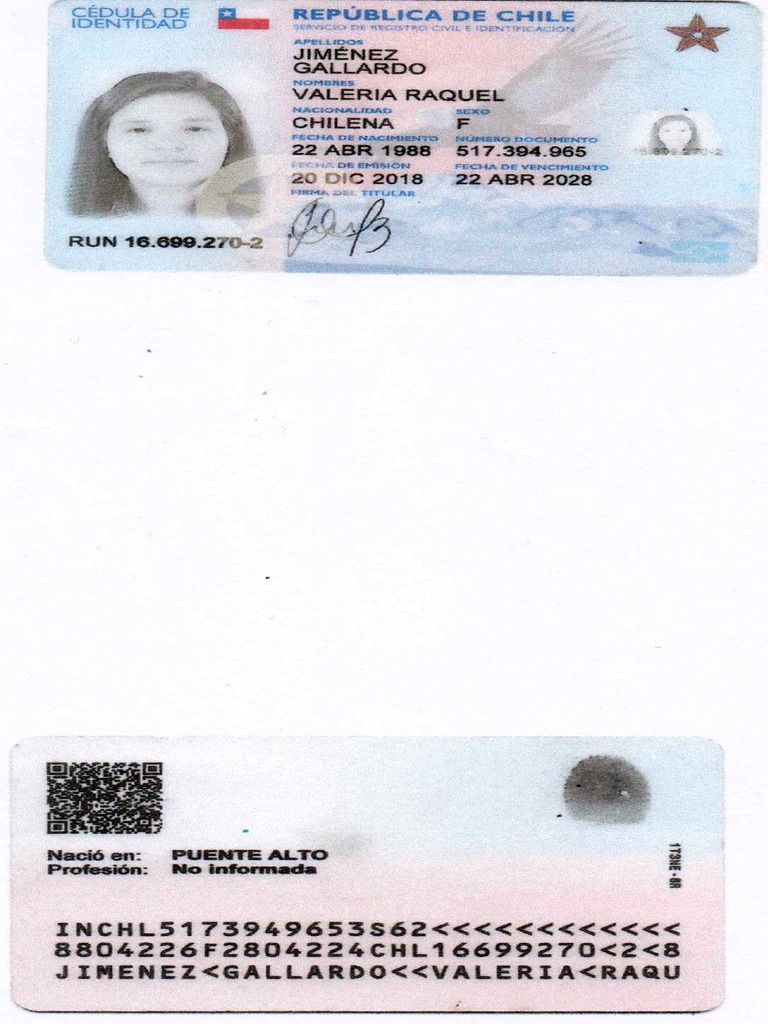The “carnet de identidad,” or identity card, serves as a key to unlock an individual’s existence within the tapestry of society. Much like a meticulously crafted key, it opens doors to rights, privileges, and responsibilities, enabling one to weave their unique narrative into the collective story of humanity. This document, often overlooked in its simplicity, serves a profound purpose, framing the very essence of personal identity against the backdrop of cultural, social, and political landscapes.
First, let us delve into the significance of this small but powerful artifact. The carnet de identidad is more than a mere assemblage of data; it is the embodiment of citizenship. It declares one’s belonging to a nation, a community. Just as seeds germinate in the fertile soil of their homeland, so does the identity card root individuals in their societal framework. It represents familial ties, historical legacies, and the indelible marks of heritage.
This documentation functions as a cornerstone of civic engagement, facilitating participation in the democratic processes that shape our world. Voting, for example, necessitates validation of identity, drawing parallels to the way a conductor calibrates the intricate symphony of an orchestra. Without the carnet, the melody of democracy falters; voices remain unheard, potential contributions remain unactualized, and societal evolution stagnates.
Moreover, the carnet de identidad resonates with the notion of security and protection. Just as a fortress defends its inhabitants against external threats, this card safeguards rights conferred upon citizens. It protects individuals from misrecognition and secures their access to essential services, such as healthcare, education, and legal entitlements. In this respect, the carnet becomes a guardian of the individual’s agency, ensuring their entitlement to participate fully in societal life.
Yet, the carnet de identidad also exposes the ironies and paradoxes entrenched within systems of governance. In many instances, the pursuit of identity is fraught with complexities. Identity can be fluid; it can morph and evolve, an ever-shifting landscape shaped by personal experiences, societal norms, and cultural influences. However, bureaucratic conventions typically strive for rigidity, categorization, and definition. This dichotomy highlights the potent tension between individual narratives and institutional frameworks.
Emphasizing this tension, the carnet can occasionally become a tool of exclusion. As populations grapple with issues of immigration and displacement, identity cards have sometimes acted as barriers rather than bridges. The very essence of what it means to belong is called into question, raising important ethical considerations about inclusivity and recognition in a world increasingly characterized by global mobility. The stark reality is that many individuals find themselves trapped within the confines of undefined identities, yearning for acknowledgement.
The transcendence of the carnet de identidad transcends national borders as well. In a globalized era, it reflects the migratory currents that characterize human existence. Just as rivers carve pathways through the earth over time, so do individuals traverse lands, often seeking refuge and new beginnings. For immigrants and refugees, the carnet becomes a symbol of hope, a tangible representation of their aspirations for stability and belonging in foreign terrain. However, this journey can be fraught with challenges, as the definition and acceptance of identity shift in new contexts.
Another intriguing aspect of the carnet de identidad is how it mirrors technological advancements and modernization. Increasingly, electronic identity systems are emerging, incorporating biometric data and digital signatures into the fabric of identification. Similar to the chameleon’s ability to adapt to its surroundings, these innovations herald the rise of a new paradigm in identity verification. While this may streamline processes and enhance security, it also raises questions about privacy and data protection. The age-old battle between convenience and conformity re-emerges; the risks and rewards must be carefully weighed as society navigates this terrain.
In various contexts, the carnet de identidad also possesses social significance, influencing interpersonal relationships and societal dynamics. It is often a facilitator of social interactions. People unconsciously acknowledge the subtle power that lies within a piece of plastic or paper. Status and privilege can be read through the lens of the identity card. These artifacts can signify societal belonging or exclusion, subtly dictating the parameters of engagement and access to social circles.
Furthermore, there is an aesthetic quality to the carnet de identidad that deserves attention. In many cultures, these cards are designed with striking imagery, colors, and emblems, representing national pride and identity. They are miniature works of art that encapsulate cultural uniqueness—a snapshot of a society’s ethos, history, and aspirations. To hold a carnet is akin to clutching a piece of one’s legacy, a physical manifestation of ideals and values that transcend mere identification.
In conclusion, the carnet de identidad is an intricate tapestry woven from the threads of identity, citizenship, and societal belonging. It embodies the paradoxes of modern existence—bridging the individual with the collective, advocating inclusivity while simultaneously posing challenges of exclusion. This extraordinary object represents not only a person’s identification but also their aspirations, struggles, and triumphs. It is both a passport into society and a mirror reflecting the complexities of human identity. Understanding and appreciating the significance of the carnet de identidad invites a more profound contemplation of what it means to belong in a world that constantly redefines itself. Like the river that reshapes the landscape, the carnet transcends time and space, creating ripples that echo through the intertwined paths of individual lives and shared histories.
